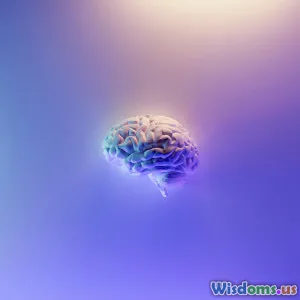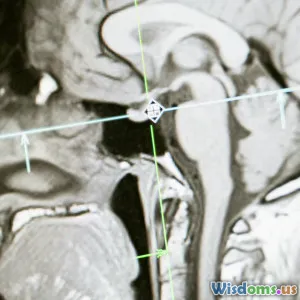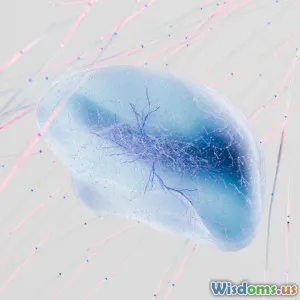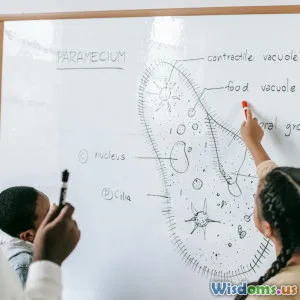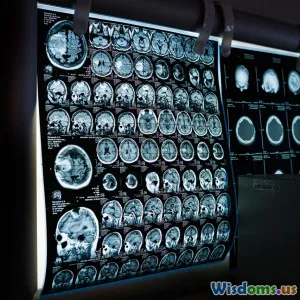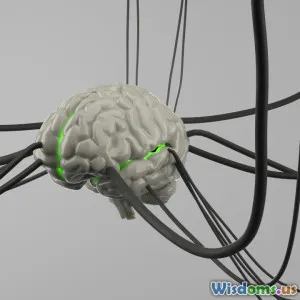
The Puzzle of Split Brain Patients Challenging Our Self Concept
10 min read Explore how split brain patients challenge traditional self concepts, revealing the complex nature of consciousness and identity. (0 Reviews)
The Puzzle of Split Brain Patients Challenging Our Self Concept
Introduction
Imagine if inside your own mind, two different voices are having separate, independent experiences—sometimes even contradicting each other. Sounds like a plot from a science fiction novel, but this phenomenon has real, tangible manifestations in the study of split brain patients. These individuals have had the corpus callosum, the thick band of nerves facilitating communication between the left and right hemispheres of the brain, surgically severed, usually to alleviate severe epilepsy.
The results of this disconnection are more than just medical curiosities; they raise profound questions about the very concept of “self.” For centuries, psychology and philosophy have treated consciousness as a single, unified phenomenon. But the split brain paradox forces us to reconsider this assumption. How can one person harbor two streams of consciousness? Are there really two selves?
This article explores the fascinating scientific experiments, case studies, and theoretical debates that emerge from studying split brain patients. We will delve into how these patients challenge our understanding of identity, neuroscience, and what it means to be an individual.
The Anatomy of the Split Brain
What Is the Corpus Callosum?
The corpus callosum is the brain’s communication highway, a dense bundle of about 200 million axons connecting the left and right cerebral hemispheres. Under normal circumstances, it allows the two hemispheres to synchronize and collaborate seamlessly.
Why Sever the Corpus Callosum?
In the mid-20th century, neurosurgeons began performing corpus callosotomies to reduce epileptic seizures that could not be controlled by medication. By disrupting cross-hemispheric seizure activity, many patients experienced significant relief. However, the procedure also revealed the functional specialization of the two hemispheres in an unprecedented way.
Revolutionary Discoveries in Split Brain Research
Roger Sperry and the Nobel Prize
The pioneering work of Roger Sperry in the 1960s revealed that the left hemisphere is generally dominant for language and analytical tasks, while the right is more adept at spatial and visual reasoning. After split-brain operation, each hemisphere appeared able to operate independently, processing information without the other hemisphere's input.
The Famous Experiments
Sperry’s team studied patients such as "Joe," whose brain surgery left him with severed hemispheres. For example, when a word or object was presented only to the right hemisphere (via the left visual field), the patient often could not verbally identify it, since speech control usually resides in the left hemisphere. However, when asked to select a related object silently with the left hand (controlled by the right hemisphere), Joe could choose correctly. This dissociation hinted at two separate centers of awareness.
The Phenomenon of Dual Consciousness
These experiments suggest that the two hemispheres can develop distinct streams of conscious experience. In some instances, one hemisphere may hold knowledge inaccessible to the other. In others, the hemispheres can even disagree, leading to what might be perceived as an internal dialogue or conflict.
In a remarkable instance, a patient’s right hemisphere wanted to eat a different food than what the left hemisphere preferred. This “alien hand” phenomenon, where one hand seemingly acts with a will of its own, exemplifies the difficulties in defining a singular, cohesive self.
Challenging the Unified Self Concept
Traditional Views of Consciousness
Classically, selfhood and consciousness have been viewed as singular experiences — one mind, one will, one story. Philosophers from Descartes to Locke about the mind have promoted the idea of a unified self. Even modern psychology often assumes an integrated identity.
Split Brain Studies Complicate This Narrative
The dual-consciousness model from split brain research complicates that notion. The idea that "self" can be fractionated suggests that what we consider normal unity of consciousness may be as much about neural connectivity as about abstract soul or mind.
This raises many questions: Is "I" just an emergent property of interconnected neural circuits? Could conscious unity simply be the cooperation of multiple subsystems?
The Philosophical Implications
Philosopher Michael Gazzaniga, a key figure in split brain research, proposed the idea of “the interpreter”—the left hemisphere’s ability to generate explanations and narratives that unify actions and experiences. However, if the right hemisphere is unaware of certain reasoning processes, can it represent the self wholly?
The puzzle is whether we are looking at one self with multiple facets or multiple selves inhabiting one brain.
Real-Life Implications and Stories
Case Study: The Alien Hand Syndrome
In split brain and other neurological conditions, patients sometimes report their left hand performing actions contrary to their desires, like unbuttoning a shirt after it’s been buttoned. These “alien hand” movements indicate a lack of unified control and surprisingly reveal how complex self-agency is.
Impact on Identity and Legal Responsibility
These discoveries have ramifications in ethics and law. For instance, if a patient’s hemispheres disagree on an action, which one takes responsibility? Discussions around split brain scenarios have fueled debates on free will and moral accountability.
Personal Accounts
While certain split brain patients exhibit cognitive and behavioral signs of dual processing, they largely report feeling normal in daily life. This paradox illustrates the brain's remarkable adaptability, as intact functioning is often maintained despite remarkable internal divisions.
Broader Understanding: Beyond Split Brain
Hemispheric Specialization and the Self
Split brain research underscores specialization but also interdependence of hemispheres. The brain’s structure supports both division and unity, indicating consciousness may arise from interactions rather than isolated parts.
Implications for Artificial Intelligence and Consciousness
Models of split brain phenomena inspire consideration of whether conscious machines might have modular or divided awareness components, leading us to rethink singular consciousness in artificial systems.
The Future of Neuroscience
Tools like fMRI and EEG further probe inter-hemispheric communication, revealing complexities beyond the binary. Future discoveries may refine or overturn current theories about self and consciousness.
Conclusion
Split brain patients present an extraordinary window into the mysteries of consciousness and identity. Through these unique minds, science has glimpsed the fracturing—and differing reconstructions—of selfhood within one brain.
Rather than a single, indivisible entity, our self might emerge from the dynamic interplay of neural networks across hemispheres, each capable of partial awareness and control.
This challenges long-held ideas of what it means to be "one," to be a person. It invites humility and wonder: the unity of the self—a concept we take for granted—is more fragile and complex than imagined.
Understanding this puzzle rapidly evolves neuroscience, psychology, philosophy, and even ethics, shaping how we perceive the human mind and identity.
In the end, the study of split brain patients doesn’t just ask "Who am I?" but rather "How do we become one?"
References
- Sperry, R. W. (1968). "Hemisphere deconnection and unity in conscious awareness." American Psychologist.
- Gazzaniga, M. S. (2005). "The Ethical Brain." Dana Press.
- Levy, N. (2011). "Neuroethics: Challenges for the 21st century." Cambridge University Press.
- Ramachandran, V. S. (1998). "Phantoms in the Brain." HarperCollins.
Rate the Post
User Reviews
Popular Posts










